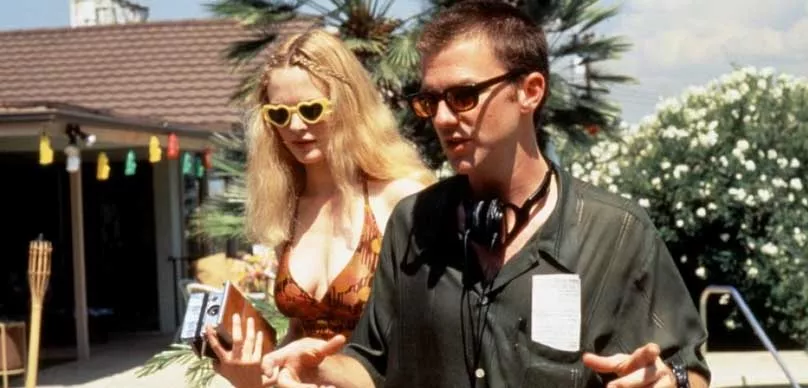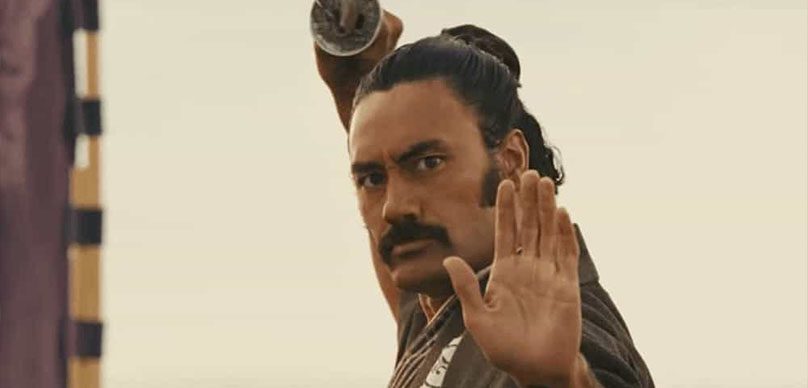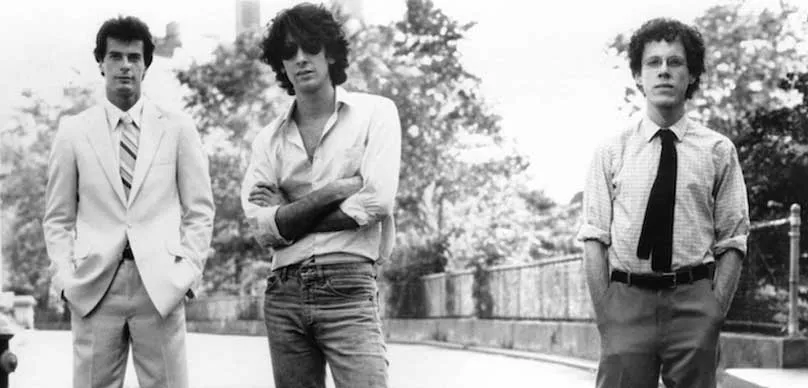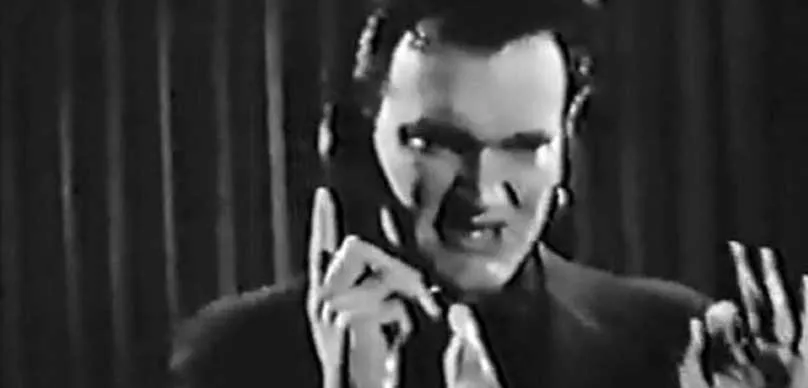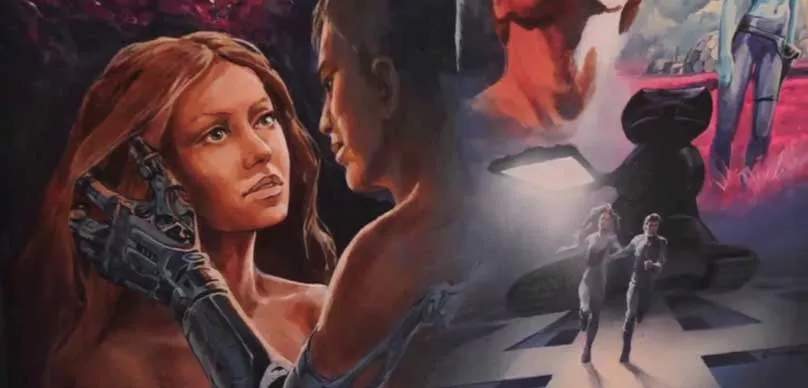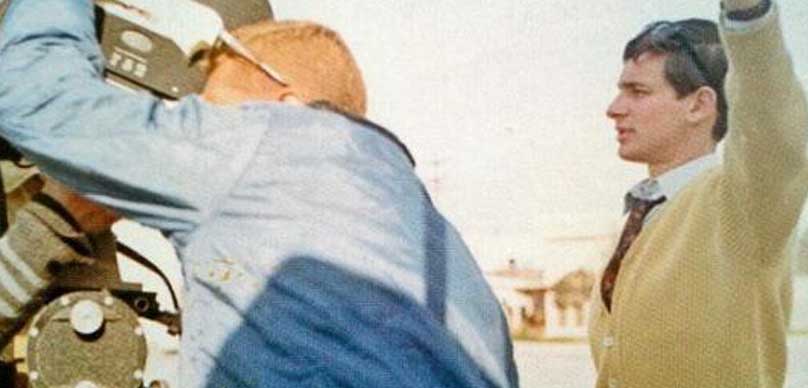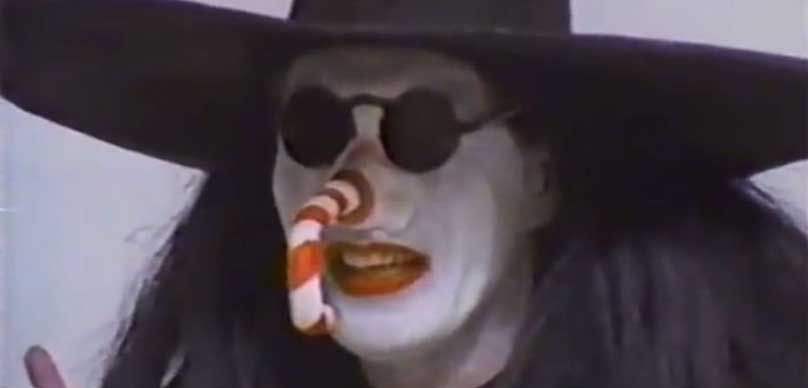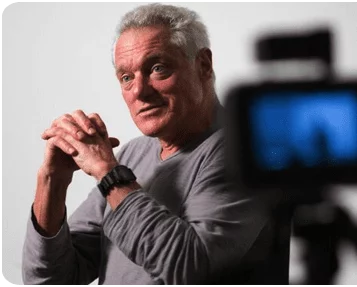I can remember when a young director by the name Paul Thomas Anderson released a remarkably good film called Boogie Nights back in 1997. The film was kind of a small bomb going off in the film industry.
Anderson made by far the best feature film about the groove porn business of the 1970s. Anderson was able to take extremely sleazy topic and elevate it to high art with his brilliant direction, camerawork and amazing performances.
Click below to read the screenplay for Boogie Nights and watch some of his early films, including the original Boogie Nights, his short The Dirk Diggler Story, as well as Cigarettes and Coffee, his hard to find short film.
Anderson is infamous for dropping out of NYU film school after two weeks. Here’s why:
My filmmaking education consisted of finding out what filmmakers I liked were watching, then seeing those films. I learned the technical stuff from books and mags, and with the new technology you can watch entire movies accompanied by commentary from the director. You can learn more from John Sturge’s audio track on the Bad Day at Black Rock Laserdisc than you can in 4 years of film school. Film school is a complete con, because the information is there if you want it.
The Dirk Diggler Story wonderful mockumentary short film shot in 1988 and written and directed by one of the best working directors alive, Paul Thomas Anderson. It tracks the rise and fall of the fictitious Dirk Diggler, a very well-endowed porn actor. The character is based on legendary porn star John Holmes.
Download and Read Paul Thomas Anderson’s Screenplay Collection in PDF
The Original Dirk Diggler
Anderson’s first work is admittedly lo-fi, filming on videotape partly out of necessity, but also because of the inherent video aesthetic of both the documentary and pornography formats. Anderson’s penchant for constantly moving the camera is already evident in THE DIRK DIGGLER STORY, seeing him utilize both handheld and Steadicam-based camera moves that roam the space and adjust the composition mid-record to lend a degree of immediacy and realism.
The documentary footage is interspersed with staged still photographs and taped interviews with the characters, further riffing on the style ofTHIS IS SPINAL TAP.
Because the year was 1988 and computer-based nonlinear editing suites had yet to become commonplace, (and editing video on a flatbed Steenbeck was impractical), Anderson had to edit THE DIRK DIGGLER STORY using the archaic, terminally frustrating VCR to VCR method.
The bane of many a young filmmaker’s existence in the 90’s, the method consisted of tediously syncing up a desired take on one VCR, recording it to a blank VHS tape on the second deck, hitting pause and then finding the next chronological shot from the original footage. Any mistake meant you had to rewind the tape to just before the error and start over again.
It was a horrible process that also completely destroyed the quality of the footage, in addition to probably discouraging a significant number of would-be directors from pursuing the profession.
Several of Anderson’s defining thematic conceits make their first appearance in THE DIRK DIGGLER STORY, like a constantly-moving camera and the presence of an omniscient narrator (best employed in 1999’s MAGNOLIA), who here is voiced by Anderson’s father, Ernie. What really strikes me about the DIRK DIGGLER STORY is the presence of a palpable family dynamic amongst this group of pornographers.
The family angle would later be played to a more substantial degree in BOOGIE NIGHTS, but already we get the sense that Anderson has a genuine love for these characters, like they’re a part of his own family. They depend on each other, they need each other, they are not complete without each other.
At a very core level, Anderson’s films are about people trying to find their place in a family unit, and those who actively turn away from the embrace of family are met with tragedies like accidental death (Dirk Diggler in this film), murder/suicide (William H. Macy in BOOGIE NIGHTS), or abandonment (Daniel Day-Lewis in 2007’s THERE WILL BE BLOOD).
As an early draft of BOOGIE NIGHTS, THE DIRK DIGGLER STORY story is already interesting on its own merits, but what makes it even more compelling from my standpoint is how fully-formed Anderson’s filmmaking voice already seems. The fact that this short follows BOOGIE NIGHTS’ general plot progression shows how long Anderson had spent developing the idea while conveying his gift for interesting, unique stories.
Despite being shot on shoddy video, the film has a certain polish that places it above what 99% of aspiring, pre-film-school directors are capable of. There’s not a lot of directors that most can say were born to be a filmmaker, but in the case of Anderson, it’s a notion that’s nearly impossible to deny.
CIGARETTES & COFFEE (1993)
When it was time for director Paul Thomas Anderson to go to college, he naturally went the film school route, like so many other would-be directors did before him. He was admitted to Boston’s Emerson College as an English major, lasting for 2 semesters (it seems like all the prominent Emersonians are actually dropouts). Unsatisfied with his education there, he enrolled in NYU’s film school, and he was there all of two days before he decided that the institution of film school in general held no benefit for him.
Instead, he decided to make a short that would serve as his “film school”, so to speak. He scraped together funding with $10,000 his father, Ernie Anderson, had squirreled away for college tuitions, and supplemented that with some gambling winnings and his girlfriend’s credit card. Once funding was complete, he worked with producer Wendy Weidman to secure a desert diner location for a weekend of shooting, as well as a camera package donation from Panavision.
This one weekend soon ballooned into a much longer shoot as production issues and on-the-job training caused no shortage of hiccups for the burgeoning director. The final result was CIGARETTES & COFFEE (1993), a weaving narrative about three sets of characters connected together by a single twenty dollar bill. The film debuted to an incredibly warm reception at the 1993 Sundance Festival, effectively kickstarting Anderson’s directing career into high gear.
In a diner in the middle of the desert, a variety of transient souls come and go, on their way to destinations unknown. In this particular moment, at this particular diner, several of the patrons are unknowingly connected to each other by a twenty dollar bill that has passed between them. In one booth, an elderly man (Philip Baker Hall) has met his squirrely younger friend (Kirk Baxter), who reveals that he’s discovered his wife to be cheating on him with his best friend, and he fears it might be too late to stop the hit he’s ordered on them both.
Two booths over, a newlywed couple in the middle of their honeymoon are quarreling over the wife’s loss of a significant amount of the husband’s money at a casino gambling table. Outside the diner, a mysterious lone man has arrived and conducts a mysterious conversation in a phone booth. The twenty dollar bill unifies the characters in some kind of cosmic conspiracy, all tied together by the time-honored ritual of brutally honest conversation over cigarettes and coffee.
Anderson’s deep knowledge of film history and obscure character actors is highly evident in CIGARETTES & COFFEE. The piece is anchored by Philip Baker Hall, a venerated performer who has since become a key player in Anderson’s repertory. His calm, collected delivery grounds the film and sets the tone just so. Getting Hall on board was something of a coup for Anderson, who approached him on the set of a CBS TV movie that the two were on together (Baker as an actor, Anderson as a lowly production assistant).
Anderson gave Baker the script to the short, and Baker was generous enough to take a gamble on this unruly, untested young director. Anderson also recruited the help of Kirk Baltz, who had previously made a name for himself as the unfortunate cop Marvin Nash in Quentin Tarantino’s RESERVOIR DOGS a year earlier.
Additionally, Baltz acted as a producer and was instrumental in getting the film made. Scott Coffey and Miguel Ferrer round out the cast, with everyone turning in fine performances that make Anderson’s direction look confident and competent, considering this is his first real time at bat.
Anderson has made a name for himself with his precise, classical approach to composition and camera movement. Unconcerned with modern, trendy techniques like “shaky cam” or rapid-fire editing, he takes his cues from the revered directors of yesteryear. CIGARETTES & COFFEE is the first evidence of this aesthetic, lensed by cinematographers Vincent Baldino and David Phillips.
Shot on handsome color film, the short is a far cry from the washed-out analog video of THE DIRK DIGGLER STORY (1988). At least, I think it is—the only copy available to view is sourced from a rather degraded VHS tape, and I have no idea if a pristine transfer is out there somewhere.
The first thing I noticed about CIGARETTES & COFFEE’s visual presentation is somewhat of an abstract, intangible thing—but there is such precision to Anderson’s compositions in the piece. Every shot is thoroughly considered, telling the most amount of story with minimal force. This is echoed in his camerawork, which glides on dollies and Steadicam rigs fluidly and flawlessly. Like his peer Tarantino, Anderson uses punchy insert shots sparingly, using them as bold punctuation rather than detailed cutaways.
Furthermore, there’s a distinct California vibe here, despite the story itself possibly being set in Nevada. Having lived his entire life in the state, Anderson’s work examines the nature and psychology of California more so than any other contemporary director. Almost of all of his work is set in California—specifically the San Fernando Valley where he was born—and explores the weird and wonderful characters that inhabit it.
This part of his style is better realized in his features, but CIGARETTES & COFFEE has elements of California-ca (?) in its dusty diner setting, beat up muscle cars and sunshade-wearing mystery men.
The early period of Anderson’s career was heavily influenced by Robert Altman. Both men made ensemble films that followed a variety of colorful characters instead of a traditional plot with a singular protagonist. While these characters initially seem very disconnected from each other and thrust into a sprawling narrative, Anderson pulls the various story threads tighter together to form a coherent mosaic centered around a singular theme or idea.
In CIGARETTES & COFFEE, we have three separate sets of characters who, on their face, are completely uninvolved in each other’s affairs. However, they are each united by a particular twenty dollar bill that has passed between them. Possession of this bill brings different fortunes to different owners—some lose everything, some gain only a little, and for some, it’s simply a routine business transaction.
CIGARETTES & COFFEE is undoubtedly the work that launched Anderson’s career. Its selection into the Sundance Film Festival’s shorts program brought him to the attention of the industry’s best and brightest. The Sundance Institute even invited him to develop the short into a feature at their directing labs, a program that also helped Tarantino launch his first feature.
In the labs, Anderson got a film education much more valuable than the one he sought and failed to find from Emerson College and New York University. In Park City, Utah, he learned from the best and honed his skills—all while developing his first full-length feature he liked to call SYDNEY, but we’d come to know as HARD EIGHT (1996).
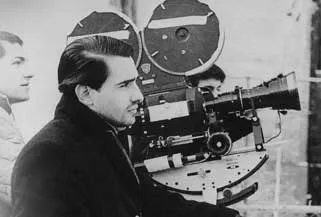
Want to watch more short films by legendary filmmakers?
Our collection has short films by Martin Scorsese, Quentin Tarantino, the Coen Brothers, Chris Nolan, Tim Burton, Steven Spielberg & more.

